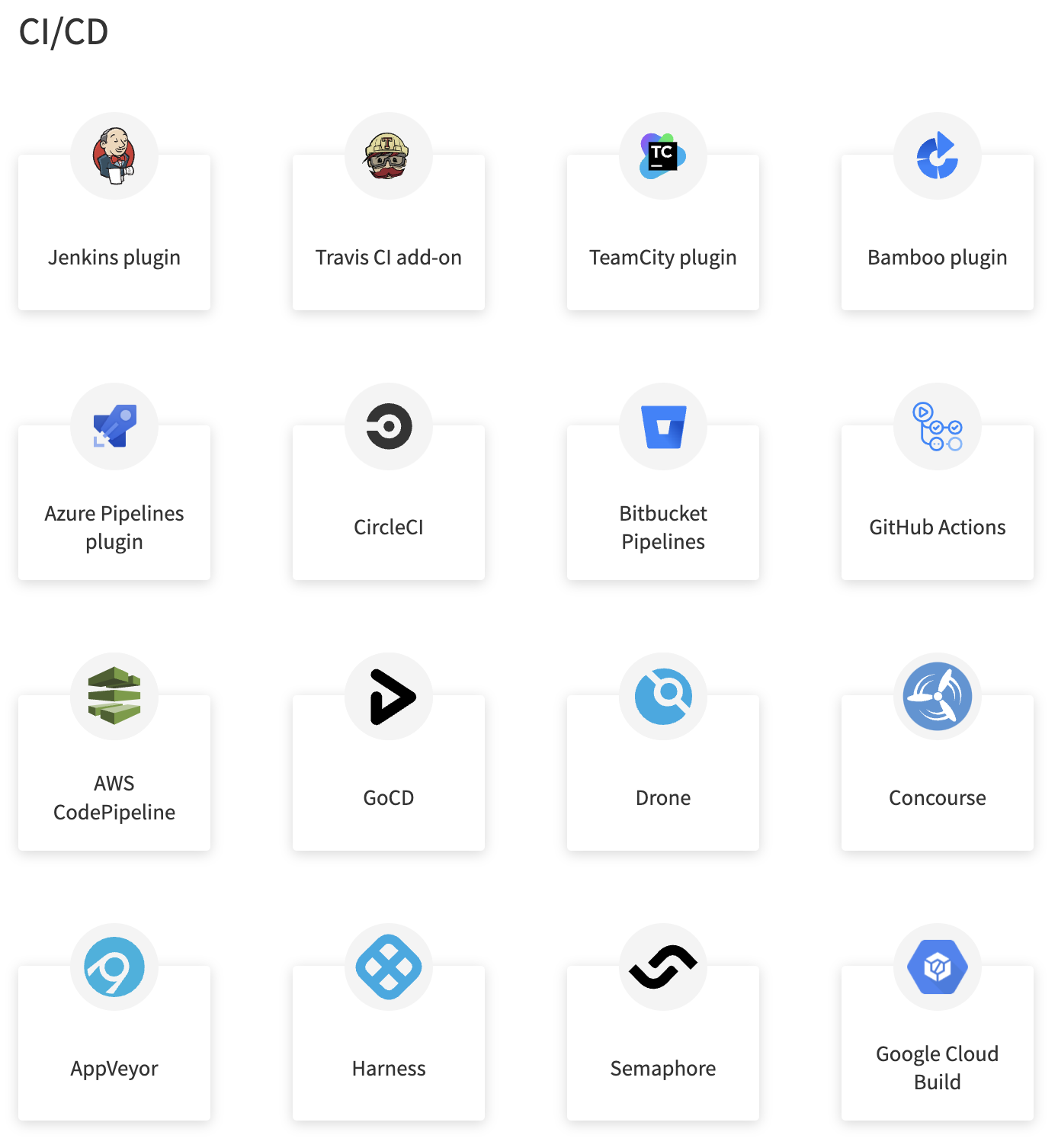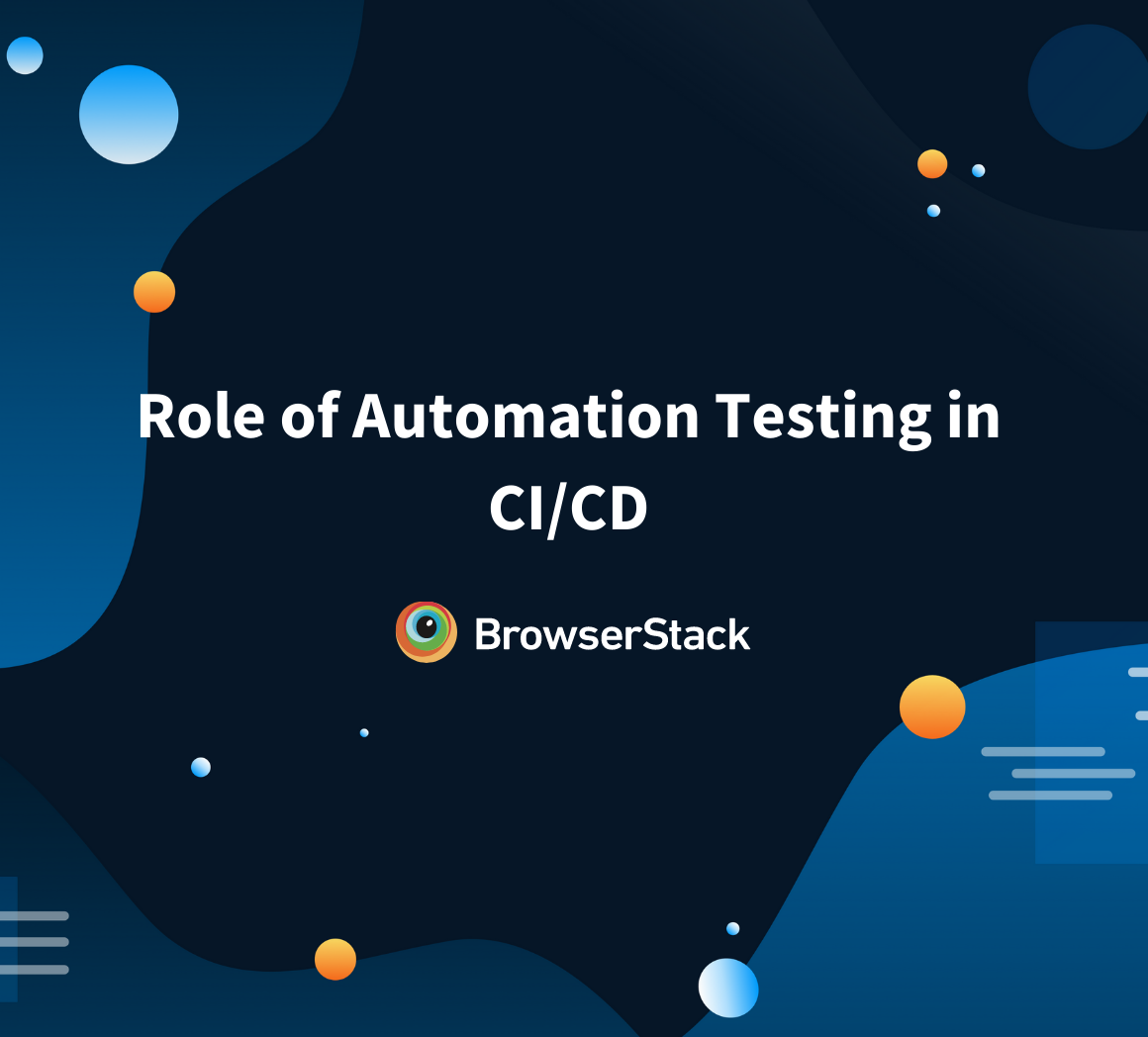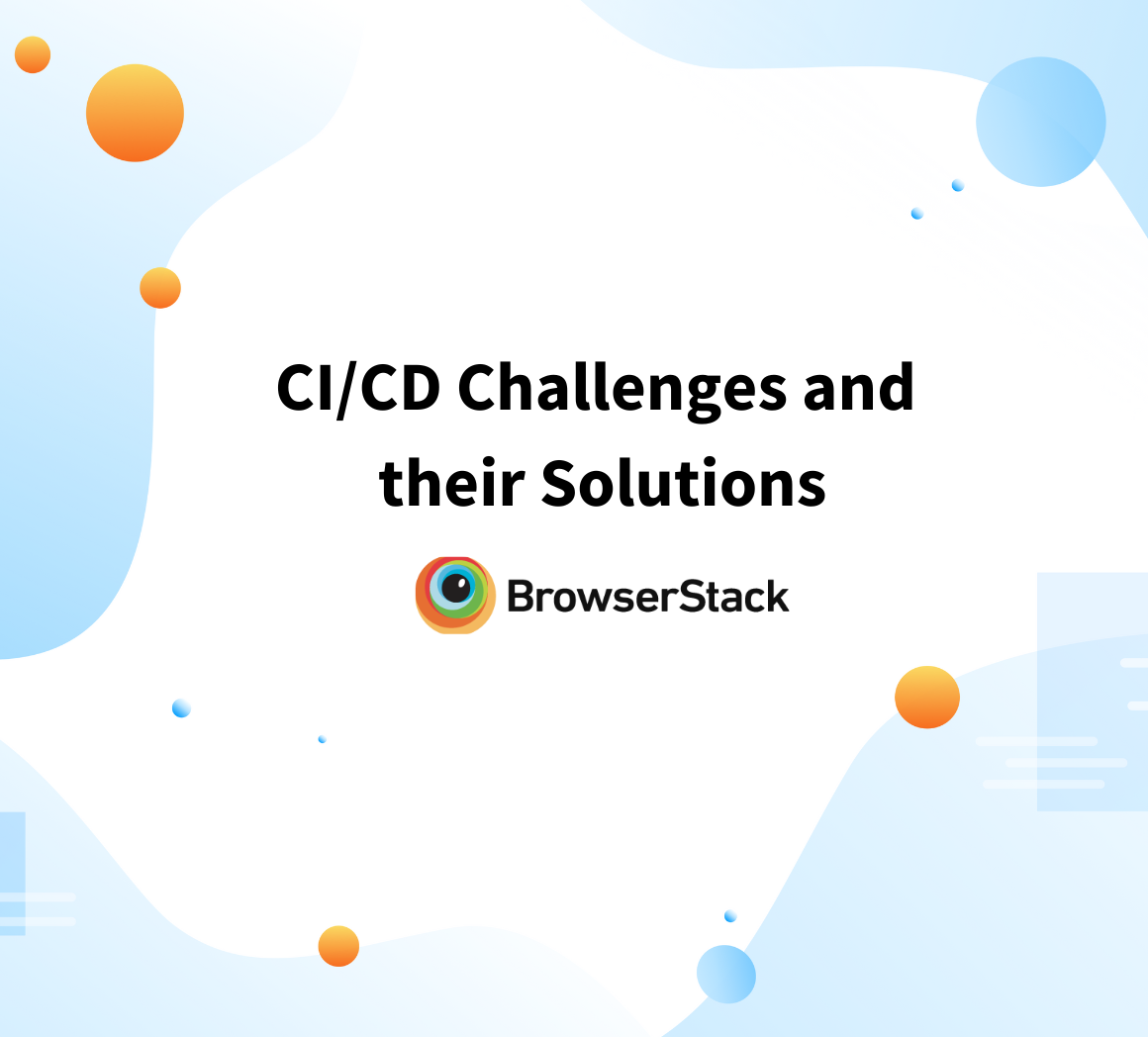Continuous Integration (CI) is used by development teams to regularly merge the code to the central repository. Continuous Delivery (CD) is an approach teams use to release features in short cycles. Therefore finding the right CI/CD tool is imperative for a successful DevOps project.
Overview
Top 22 CI CD Tools for Automation Testing
- Jenkins
- GitLab CI/CD
- CircleCI
- Travis CI
- GitHub Actions
- Azure DevOps
- Bitbucket Pipelines
- Bamboo
- TeamCity
- GoCD
- Spinnaker
- Harness
- Buddy
- Codefresh
- Semaphore
- Octopus Deploy
- Buildkite
- SAP Continuous Integration and Delivery
- Google Cloud Build
- IBM UrbanCode
- Tekton
- Flux
This guide explores the top 22 CI CD tools for automation testing covering their key features, pros and cons.
What are CI CD tools?
CI/CD tools are essential components in software development that help automate the process of integrating and delivering code.
Continuous Integration (CI) ensures that code changes from multiple developers are regularly merged into a shared repository, where they are automatically tested to detect and address any issues early.
Continuous Deployment/Delivery (CD) takes this a step further by automating the release of code to production environments, ensuring that new features and fixes can be delivered to users quickly and reliably.
These tools streamline the entire development pipeline, reduce manual errors, enhance collaboration, and ultimately lead to faster and more efficient software delivery.
Popular CI/CD tools like Jenkins, GitLab CI/CD, CircleCI, and GitHub Actions are widely used to implement these practices, making them a cornerstone of DevOps and agile methodologies in the tech industry.
Also Read: How to setup a CI/CD Pipeline?
22 Best CI CD Tools for Automation Testing
Here are the top 22 CI CD tools to enhance and fortify your automation testing efforts:
1. Jenkins
Jenkins is an open-source automation server widely used for continuous integration and continuous delivery (CI/CD). It has a vast plugin ecosystem.
Features:
- Over 1,000 plugins to support building, deploying, and automating projects.
- Supports a wide variety of version control systems (Git, SVN, Mercurial).
- Highly customizable pipeline scripts.
Advantages:
- Strong community support and extensive documentation.
- Flexible and extensible with plugins.
- Can be self-hosted for full control.
Limitations:
- Requires significant setup and maintenance.
- Performance can degrade with large, complex pipelines.
Read More: CICD with Jenkins
2. GitLab CI/CD
GitLab CI/CD is integrated into GitLab and provides robust tools for continuous integration, delivery, and deployment.
Features:
- Built-in CI/CD pipelines with GitLab repositories.
- Auto DevOps for automated CI/CD pipelines.
- Kubernetes integration for container orchestration.
Advantages:
- Tight integration with GitLab repositories.
- Auto DevOps simplifies pipeline setup.
- Comprehensive security and compliance features.
Limitations:
- Can be resource-intensive for large projects.
- Learning curve for advanced features.
Read More: How to run test on GitLab CI Locally
3. CircleCI
CircleCI is a cloud-based CI/CD tool that automates the build, test, and deploy process. It provides integrations into multiple tools and can be configured to run complex pipelines.
Features:
- Easy integration with GitHub and Bitbucket.
- Docker support for containerized environments.
- Auto-scaling to handle large workloads.
Advantages:
- Fast setup with simple configuration.
- Scales automatically with demand.
- Excellent support for parallel testing.
Limitations:
- Limited free plan features.
- Pricing can escalate with heavy usage.
Read More: CircleCI vs GitLab: Core Differences
4. Travis CI
Travis CI is a continuous integration service that is easy to set up and integrates well with GitHub. Travis CI is great in the continuous integration of out-of-the-box solutions.
Features:
- Simple configuration with a .travis.yml file.
- Supports multiple programming languages.
- Cloud and on-premises options.
Advantages:
- Quick setup, especially for GitHub projects.
- Free for open-source projects.
- Comprehensive build environment matrix.
Limitations:
- Limited control over the build environment in the free version.
- Can be slower than competitors for complex builds.
Read More: Jenkins vs Travis: The War of CI Tools
5. GitHub Actions
GitHub Actions is GitHub’s native CI/CD tool, enabling automation directly in GitHub repositories.
Features:
- Deep integration with GitHub repositories.
- Supports custom workflows with YAML.
- Extensive marketplace for pre-built actions.
Advantages:
- Seamless integration with GitHub.
- Easy to get started with predefined actions.
- Scales with GitHub’s infrastructure.
Limitations:
- Pricing can become expensive for large-scale usage.
- Limited to GitHub as a version control system.
6. Azure DevOps
Azure DevOps is a set of development tools from Microsoft that includes CI/CD, version control, and project management.
Features:
- Integrated with Azure cloud services.
- Pipelines for CI/CD with support for multiple languages and platforms.
- Built-in testing and deployment tools.
Advantages:
- Deep integration with Microsoft ecosystem.
- Strong enterprise support and security features.
- Flexible for different development and deployment scenarios.
Limitations:
- Complex setup for non-Microsoft environments.
- Can be overwhelming for small teams due to feature richness.
Read More: Automated testing with Azure DevOps
7. Bitbucket Pipelines
Bitbucket Pipelines is a CI/CD tool integrated into Bitbucket, providing a continuous delivery pipeline within your Bitbucket repository.
Features:
- YAML-based pipeline configuration.
- Built-in Docker support.
- Integration with Jira for issue tracking.
Advantages:
- Seamless integration with Bitbucket.
- Easy setup and configuration.
- Good for small to medium-sized teams.
Limitations:
- Limited compared to standalone CI/CD tools.
- Performance may suffer on larger, more complex projects.
8. Bamboo
Bamboo is an Atlassian CI/CD tool designed for continuous integration, deployment, and delivery.
Features:
- Integration with other Atlassian tools like Jira and Bitbucket.
- Parallel builds and deployments.
- Extensive plugin support for customization.
Advantages:
- Seamless integration with the Atlassian ecosystem.
- Strong support for build automation and testing.
- Flexible licensing for various team sizes.
Limitations:
- Higher cost compared to some open-source alternatives.
- Steeper learning curve for non-Atlassian users.
Read More: Jenkins vs Bamboo: Core Differences
9. TeamCity
TeamCity is a CI/CD tool developed by JetBrains that focuses on continuous integration and continuous delivery. It is written in Java. Team City allows developers to integrate, code, and is easier to configure with simple steps
Features:
- Supports multiple VCS integrations.
- Advanced build configuration and templating.
- Extensive plugins and third-party integrations.
Advantages:
- Free tier available with basic functionality.
- Powerful build configurations and management.
- Strong support for .NET and Java projects.
Limitations:
- Can be complex to set up for large teams.
- Limited free plan features.
Read More: TeamCity vs Jenkins vs Bamboo: A Breakdown
10. GoCD
GoCD is an open-source CI/CD tool that provides value stream mapping, enabling visual representation of build and deployment pipelines. GoCD is developed using Java and Ruby.
Features:
- Pipeline as Code configuration.
- Strong support for complex deployment workflows.
- Native support for Docker.
Advantages:
- Open-source with a strong community.
- Powerful visualization of pipelines.
- Ideal for complex release processes.
Limitations:
- Requires significant setup and maintenance.
- Limited plugin ecosystem compared to Jenkins.
Also Read: GoCD vs Jenkins
11. Spinnaker
Spinnaker is an open-source, multi-cloud continuous delivery platform for releasing software changes with high velocity.
Features:
- Multi-cloud deployment capabilities.
- Integration with Kubernetes and other container orchestration platforms.
- Supports canary deployments and blue/green deployments.
Advantages:
- Strong support for multi-cloud environments.
- Advanced deployment strategies.
- Open-source and community-driven.
Limitations:
- Complex setup and resource-intensive.
- Requires significant expertise to configure and manage.
12. Harness
Harness is a continuous delivery-as-a-service platform that uses AI/ML to optimize and automate CI/CD processes.
Features:
- AI-driven deployment verification.
- Automated rollback in case of failure.
- Extensive integration with various DevOps tools.
Advantages:
- AI/ML features for intelligent automation.
- Simplified deployment with automatic rollback.
- Strong support for microservices and containers.
Limitations:
- Pricing can be prohibitive for small teams.
- Learning curve for utilizing AI-driven features.
13. Buddy
Buddy is a CI/CD tool designed for developers that focuses on simplicity and ease of use, offering pre-configured actions.
Features:
- Drag-and-drop pipeline editor.
- Pre-configured actions for various languages and frameworks.
- Docker support and integrations with multiple cloud providers.
Advantages:
- User-friendly interface.
- Quick setup with pre-configured pipelines.
- Good for small to medium-sized teams.
Limitations:
- Limited advanced features for complex workflows.
- Pricing can scale up quickly with usage.
14. Codefresh
Codefresh is a Kubernetes-native CI/CD platform that focuses on containers and microservices, providing robust tools for modern applications.
Features:
- Kubernetes-native with built-in Docker support.
- Visual pipeline editor.
- GitOps-based deployments.
Advantages:
- Optimized for containerized applications.
- Strong integration with Kubernetes.
- User-friendly visual pipeline editor.
Limitations:
- Best suited for container and Kubernetes-based projects.
- Pricing can be high for small teams.
15. Semaphore
Semaphore is a fast, powerful, and easy-to-use CI/CD tool that is focused on performance and simplicity.
Features:
- Parallel testing and deployment pipelines.
- YAML-based configuration.
- Optimized for speed with fast builds and deployments.
Advantages:
- High-performance CI/CD tool with fast execution times.
- Simple and easy to configure.
- Scales well with project complexity.
Limitations:
- Limited support for non-GitHub repositories.
- Advanced features may require custom configurations.
16. Octopus Deploy
Octopus Deploy automates software deployments across cloud, on-premises, and hybrid environments. It streamlines release management and version control.
Features:
- Deploys to multiple environments with ease
- Supports rollback and version tracking
- Integrates with Jenkins, GitLab CI/CD, and Azure DevOps
Advantages:
- Makes deployment workflows easy
- Facilitates secure access with role-based controls
- Centralizes multi-environment management
Limitations:
- Requires setup before usage
- Costs may rise for large teams
17. Buildkite
Buildkite is a scalable CI/CD tool that runs pipelines on self-hosted infrastructure. It thus ensures flexibility and security.
Features:
- Supports self-hosted and hybrid CI/CD pipelines
- Integrates with GitHub, GitLab, and Bitbucket
- Enables parallel test execution for quicker builds
Advantages:
- Provides full control over infrastructure.
- Scales efficiently with large teams.
- Ensures secure builds with minimal cloud exposure.
Limitations:
- Demands setup and maintenance.
- Costs increase with usage and team size.
18. SAP Continuous Integration and Delivery
SAP Continuous Integration and Delivery automates CI/CD processes for SAP applications, allowing for seamless development and deployment.
Features:
- Preconfigured pipelines for SAP-specific workflows
- Integration with SAP Cloud Platform and on-premises systems
- Supports version control tools like GitHub and GitLab
Advantages:
- Simplifies SAP application deployment
- Minimizes manual effort with automated workflows
- Ensures compatibility with SAP environments
Limitations:
- Limited flexibility for non-SAP projects
- Requires SAP expertise for using it effectively
19. Google Cloud Build
Google Cloud Build automates CI/CD workflows, enabling fast and secure builds across multiple environments.
Features:
- Builds, tests, and deploys code in Google Cloud.
- Integrates with GitHub, GitLab, and Bitbucket.
- Supports containerized builds with Kubernetes and Docker.
Advantages:
- Scales efficiently with cloud-native architecture.
- Provides deep integration with Google Cloud services.
- Offers pay-per-use pricing for cost efficiency.
Limitations:
- Limited customization for complex workflows.
- Requires familiarity with Google Cloud tools.
20. IBM UrbanCode
IBM UrbanCode automates application deployment and release management across hybrid and multi-cloud environments.
Features:
- Supports automated deployments with rollback capabilities
- Integrates with cloud platforms, containers, and on-premises systems
- Enables version tracking and approval workflows
Advantages:
- Simplifies complex deployment pipelines
- Facilitates secure, auditable releases
- Supports large-scale enterprise environments
Limitations:
- Requires configuration for effective use
- Licensing costs can be high for enterprises
21. Tekton
Tekton is an open-source framework for building cloud-native CI/CD pipelines using Kubernetes.
Features:
- Runs CI/CD pipelines natively on Kubernetes
- Offers reusable, modular pipeline components
- Integrates with GitHub, GitLab, and cloud services
Advantages:
- Scales efficiently in cloud environments
- Offers flexibility with customizable workflows
- Open-source with strong community support
Limitations:
- Requires Kubernetes expertise
- Lacks a built-in user interface
22. Flux
Flux is a GitOps-based continuous delivery tool for Kubernetes, ensuring automated and version-controlled deployments.
Features:
- Automates deployments based on Git repository changes
- Supports Kubernetes-native continuous delivery
- Integrates with Helm and Kustomize for configuration management
Advantages:
- Ensures consistent and reproducible deployments
- Reduces manual intervention with GitOps workflows
- Open-source with strong community support
Limitations:
- Requires GitOps knowledge for setup
- Limited functionality outside Kubernetes environments
Top 10 CI CD Tools: Quick Comparison
Here is a quick overview of the top 10 CI/CD tools:
| Tool | Best For | Test Automation Support | Parallel Execution | Integration with Testing Frameworks | Scalability | Ease of Setup | Cost Efficiency |
|---|---|---|---|---|---|---|---|
| Jenkins | Customizable CI/CD, legacy systems | Selenium, JUnit, TestNG, Robot Framework | Yes (via plugins) | Extensive plugins (Cucumber, PyTest, etc.) | High (self-hosted) | Complex | Free (high maintenance cost) |
| GitLab CI/CD | GitLab users, security-focused | Built-in reports, Selenium, Cypress, Playwright | Yes (container-based) | JUnit, TestNG, pytest, RSpec | High (cloud/self-hosted) | Easy | Included in GitLab plans |
| CircleCI | Fast cloud-based CI/CD | Docker-based, Cypress, Selenium, Jest | Yes (paid tiers) | JUnit, pytest, Mocha | Auto-scaling (cloud) | Easy | Pay-per-use (can get expensive) |
| Travis CI | Open-source projects | YAML-based, JUnit, pytest, RSpec | Limited (free tier) | Ruby, Python, Java tools | Moderate | Easy | Free for open-source |
| GitHub Actions | GitHub-integrated workflows | Playwright, Cypress, Selenium, Jest | Yes (matrix jobs) | All major frameworks | High (cloud) | Easy | Free (public), pay-per-minute (private) |
| Azure DevOps | Enterprise DevOps | Selenium, NUnit, JMeter, built-in Test Plans | Yes | MSTest, pytest, JUnit | High (enterprise) | Moderate | Paid (free for small teams) |
| Bitbucket Pipelines | Small Bitbucket teams | Selenium, Cypress, Cucumber | Limited (paid tiers) | JUnit, pytest | Moderate | Easy | Paid (free for small usage) |
| Bamboo | Atlassian ecosystem | JUnit, TestNG, Selenium | Yes | Cucumber, pytest | High (self-hosted) | Moderate | Paid license (expensive) |
| TeamCity | Advanced test management | JUnit, NUnit, Selenium (flaky test detection) | Yes | .NET, Java, and Python frameworks | High (cloud/on-prem) | Moderate-Complex | Free tier (paid plans costly) |
| GoCD | Complex pipelines, manual gating | Selenium, JUnit, pytest | Yes | Pipeline-as-Code support | High (self-hosted) | Complex | Free (open-source) |
How to choose the right CI CD Tool?
Choosing the right CI/CD tool depends on several factors related to your project’s requirements, team expertise, and the existing technology stack.
Here are key considerations and scenarios to help guide your decision:
1. Project Size and Complexity
- Small Projects or Startups: If you’re working on a smaller project or within a startup with limited resources, opt for a CI/CD tool that is easy to set up and maintain. CircleCI or GitHub Actions might be suitable due to their simplicity and integration with popular repositories like GitHub.
- Large, Complex Projects: For larger projects with complex build and deployment processes, tools like Jenkins or GitLab CI/CD offer more customization and scalability. Jenkins, for example, has a vast library of plugins that can be tailored to specific needs but require more setup and maintenance.
2. Integration with Version Control Systems (VCS)
- GitHub Users: If your project is hosted on GitHub, GitHub Actions offers seamless integration, making it a convenient choice. It supports a wide range of automation workflows directly within the GitHub ecosystem.
- GitLab Users: For projects hosted on GitLab, GitLab CI/CD is the most integrated option, offering native CI/CD pipelines with robust features like auto DevOps.
- Bitbucket Users: If you’re using Bitbucket, Bitbucket Pipelines offers integrated CI/CD capabilities within the Bitbucket environment.
3. Team Expertise and Resources
- Limited DevOps Expertise: If your team lacks extensive DevOps experience, choose a tool with a lower learning curve and good documentation. Travis CI or CircleCI are user-friendly and provide clear documentation to help teams get started quickly.
- Advanced DevOps Teams: For teams with strong DevOps skills, Jenkins might be preferred due to its flexibility and powerful plugin ecosystem, despite the steeper learning curve.
4. Cloud vs On-Premises
- Cloud-Native Projects: If your infrastructure is cloud-based, consider CI/CD tools that offer strong cloud integration. CircleCI, Travis CI, and Azure DevOps have robust cloud capabilities and are hosted solutions, removing the need for on-premise management.
- On-Premises Requirements: If your organization requires on-premises solutions for security or compliance reasons, Jenkins or GitLab CI/CD offer self-hosted options that can be fully controlled within your environment.
5. Pipeline Complexity
- Simple Pipelines: For straightforward CI/CD pipelines that require basic build, test, and deploy steps, tools like GitHub Actions or Bitbucket Pipelines are sufficient and provide easy setup.
- Complex Pipelines with Multiple Stages: For pipelines that involve complex workflows, such as multiple stages, parallel execution, or intricate dependency management, Jenkins or Azure DevOps provide more advanced features and greater flexibility.
6. Cost Considerations
- Budget Constraints: If cost is a concern, evaluate the pricing model of the CI/CD tool. Open-source tools like Jenkins are free to use but may incur indirect costs related to maintenance and infrastructure. SaaS solutions like CircleCI or GitLab CI/CD offer free tiers but may charge for higher usage levels or additional features.
- Enterprise Needs: For enterprises with larger budgets, consider tools that offer robust enterprise features like security controls, compliance, and support. Azure DevOps or GitLab CI/CD offer enterprise plans with additional support and features tailored for large organizations.
7. Security and Compliance
- High-Security Requirements: If your project involves sensitive data or requires compliance with industry standards, choose a tool that offers strong security features, such as role-based access control (RBAC), audit logs, and integration with security scanning tools. GitLab CI/CD and Azure DevOps are known for their comprehensive security features.
- Open-Source Considerations: For those preferring open-source solutions with full control over their CI/CD environment, Jenkins is a go-to option. It requires careful management to ensure security best practices are followed.
8. Scalability Needs
- Growing Projects: If your project is expected to grow in complexity or scale, choose a CI/CD tool that can scale with your needs. Jenkins and GitLab CI/CD are highly scalable and can handle large, complex pipelines as your project expands.
- Auto-Scaling: For cloud projects, consider tools like CircleCI that offer auto-scaling capabilities, ensuring that your CI/CD processes can handle varying workloads without manual intervention.
Some common issues to consider while choosing a CI/CD tool can be:
- Maintenance Overhead: Self-hosted solutions like Jenkins offer flexibility but require significant maintenance and setup. Consider whether your team can commit the resources needed to manage the infrastructure.
- Vendor Lock-In: Some cloud-based tools may lead to vendor lock-in. Ensure that the tool you choose integrates well with your existing and future technology stack.
- Performance Issues: Be aware that some tools may have performance limitations based on their pricing tier or infrastructure. Test the tool under expected load conditions to avoid surprises in production.
Choosing the right CI/CD tool involves evaluating your project’s size, complexity, team expertise, infrastructure, and budget. By aligning these factors with the tool’s features and limitations, you can select the CI/CD solution that best meets your development and operational needs.
Pro Tip: BrowserStack Automate seamlessly integrates with any CI/CD tool you choose, including popular options like Jenkins, GitLab CI/CD, CircleCI, Travis CI, and GitHub Actions. This integration ensures that every code change is instantly validated across real browsers and devices, improving the reliability and quality of your deployments.
Which CI CD Tools should you choose?
Each CI/CD tool has its own pros and cons. The best tool for you will depend on your needs, such as the size and complexity of your project and the infrastructure you already have in place.
You can choose a more straightforward, cloud-native tool like CircleCI or GitHub Actions, or a more powerful, enterprise-level option like Jenkins or GitLab CI/CD. Knowing the pros and cons of each tool will help you make an informed choice.
Benefits of using CI CD Tools
Here are some of the core benefits of CI/CD tools:
- Faster Time to Market: By automating the build, test, and deployment processes, CI/CD tools enable teams to release new features and fixes more quickly and frequently.
- Improved Quality: CI/CD tools enforce automated testing, which helps catch bugs and issues early in the development cycle for more stable releases.
- Reduced Manual Errors: Automation minimizes the risk of human error during repetitive tasks such as code integration, testing, and deployment to bring consistency and reliability to the development process.
- Early Bug Detection: Continuous integration allows for early detection of integration issues and bugs as the code is integrated and tested frequently.
- Efficient Use of Resources: Automation reduces the need for manual intervention in the build and deployment process, allowing developers to focus more on coding and problem-solving rather than repetitive tasks.
- Consistent Deployment Environments: CD tools ensure that code is deployed in a consistent manner across different environments (development, staging, production) reducing the chances of environment-specific issues.
- Faster Feedback Loop: Developers receive rapid feedback on their code changes through automated testing and deployment accelerating the development process.
- Scalability: CI/CD pipelines can be scaled to handle larger projects and more complex workflows. This adaptability supports growth and evolving requirements.
- Improved Security: Automated security checks and vulnerability scans can be integrated into the CI/CD pipeline, ensuring that security best practices are followed.
- Reduced Deployment Risks: By deploying small, incremental changes frequently, CD tools help mitigate the risks associated with large-scale deployments and make it easier to rollback changes if needed.
- Better Monitoring and Reporting: CI/CD tools often come with built-in monitoring and reporting features that provide insights into the build and deployment processes, helping teams identify and address issues proactively.
Just like Test Management Tool which integrates well with Azure DevOps and Jenkins.
CI/CD Tool Trends
CI/CD tools are evolving further to match the increasing demand for better efficiency, security, and flexibility. Some of the trends are:
- Cloud-Native Integration: CI/CD tools nowadays support containerization and orchestration platforms such as Kubernetes more efficiently. This transformation makes deployments scalable and fault-tolerant. They now blend well with cloud computing’s elastic nature.
- AI and Machine Learning in CI/CD: AI-based automation is revolutionizing CI/CD processes. Predictive analytics, smart test automation, and streamlined deployment pipelines enable data-driven, proactive decision-making. GitHub Copilot is just one of the tools that incorporate AI to simplify development and deployment.
- Microservices and Containerization: Microservices architecture allows teams to deploy services separately, minimizing risks associated with large-scale releases. CI/CD pipelines enable regular updates through automated deployment processes. Kubernetes is central to orchestrating these deployments, providing smooth scalability and management.
- Real-Time Monitoring and Analytics: Current CI/CD platforms offer real-time visibility into application status after deployment. Advanced monitoring tools enable teams to quickly identify and correct issues, enhancing system reliability and performance.
- Serverless Deployments: CI/CD tools today also accommodate serverless environments. This allows the development of light, scalable applications with Azure Functions, thus removing infrastructure management needs without compromising on deployment efficiency.
- Policy as Code: Compliance automation is picking up pace with Policy as Code. Kyverno and Open Policy Agent (OPA) facilitate security and governance verification inside CI/CD pipelines to assure compliance standards.
- Increased Security Features: The advent of DevSecOps has embedded security into CI/CD pipelines, allowing proactive vulnerability identification. Automated scanning solutions such as Amazon Inspector and Tenable provide constant security monitoring and adherence to standards like SOC 2, PCI DSS, etc. This lowers the risk of breaches and retains development agility.
How Automated testing fits into the CI CD pipeline
Automated testing plays a key role in the CI CD pipeline to reduce errors, expedite releases, and ensure quality software. The process occurs in these steps:
- Commit: Software developers commit changes to code within the repository to trigger the pipeline.
- Build: The system builds the code to form an executable version while confirming integrity.
- Automated Testing: Unit, integration, and function tests execute to capture errors early on and give quick feedback.
- Deploy: Upon clearing all the tests, the tested build is deployed to production for end-users.
Through automated testing in each stage, CI/CD pipelines can facilitate quality software releases and accelerate delivery cycles.
Why use BrowserStack for Test Automation in the CI/CD pipeline?
Using BrowserStack for Test Automation in the CI/CD Pipeline offers several compelling advantages, especially for teams focused on delivering high-quality applications that are cross browser and cross platform compatible across different devices.
Here’s why BrowserStack is a valuable addition to your CI/CD pipeline:
- Real Device Testing: BrowserStack real device cloud allows you to run automated tests on a vast range of real devices and browsers, ensuring that your application works flawlessly across different environments. This eliminates the need for maintaining a complex, in-house device lab, saving both time and resources.
- Seamless Integration with CI/CD Tools: BrowserStack integrates effortlessly with popular CI/CD tools like Jenkins, GitLab CI/CD, CircleCI, Travis CI, and GitHub Actions.
This allows you to automate testing as part of your build and deployment pipelines, ensuring that every code change is validated against real-world scenarios before reaching production.
- Parallel Test Execution: BrowserStack supports parallel test execution, which significantly reduces the time required to run your test suite. This is particularly beneficial in a CI/CD pipeline where fast feedback is crucial for maintaining the pace of development.
- Comprehensive Cross-Browser Testing: With BrowserStack, you can automate tests across a wide range of browser versions, operating systems, and mobile devices. This ensures that your application provides a consistent user experience, regardless of where it is accessed.
- Scalability: BrowserStack’s cloud infrastructure scales with your testing needs. Whether you’re running a few tests or thousands, BrowserStack can handle the load, making it ideal for projects of any size.
- Instant Test Feedback: The ability to get instant feedback on your tests helps in quick identification and resolution of issues. This accelerates the development cycle, reduces the likelihood of bugs reaching production, and improves the overall quality of the software.
- Security and Compliance: BrowserStack provides secure testing environments, with enterprise-grade security features that ensure your data and application are safe. This is critical for organizations with strict security and compliance requirements.
- Detailed Reporting and Debugging Tools: BrowserStack offers comprehensive test reports and debugging tools, including screenshots, logs, and videos of test sessions. This makes it easier to identify and fix issues quickly, improving the efficiency of your development and QA teams.
- Support for Multiple Frameworks: BrowserStack supports all major test automation frameworks like Selenium, Appium, Cypress, and more. This flexibility allows teams to continue using their preferred tools while benefiting from BrowserStack’s capabilities.
- No Maintenance Overhead: Since BrowserStack is a cloud-based solution, there is no need for infrastructure maintenance or updates. This allows your team to focus on writing tests and improving code quality, rather than managing testing environments.
When you add BrowserStack to your CI/CD pipeline, you can test your apps on a lot of different devices and browsers in the real world without having to keep up with expensive in-house hardware.
It makes releases faster, more reliable, and with more trust. This makes it an important tool for teams that want to keep delivering high-quality software.
Importance of Automation Testing in CI/CD Pipeline
Automated testing adds value to CI/CD pipelines by optimizing software efficiency, reliability, and quality. The major advantages are:
- Increased Efficiency: Tests execute quickly and repeatedly, leaving the developers to write code.
- Better Code Quality: Pipelines automate repetitive tasks, minimizing the chance of human errors. Thus facilitating code consistency.
- Quicker Feedback: Real-time test execution facilitates quick resolution of problems by developers, cutting down on debugging time.
- Better Test Coverage: Automation offers extensive testing, including edge cases that are easily overlooked.
- Faster Time to Market: Faster automated testing accelerates releases, allowing faster feature delivery.
- Consistency Across Environments: Automated testing guarantees consistent execution across various environments, minimizing differences.
Read More: How to ensure Maximum Test Coverage?
Conclusion
CI CD tools and procedures help developers in applying discipline, efficiency, and high-quality control standards in software development. CI CD is crucial for the DevOps engineers and development teams and is a critical component of the software development and project management process.
Implementing CI CD improves business outcomes in addition to the advantages of process automation. Organizations that efficiently use continuous integration tools maximize their human resources, save money, and have more time and resources available for strategy development and employee training.
Useful Resources for CI/CD
Understanding CI/CD
- What is CI/CD? (Differences, Benefits, Tools, Fundamentals)
- CI vs CD: Difference between Continuous Integration and Continuous Delivery?
- How to implement a CI/CD Pipeline?
- How to build an effective CI CD pipeline
- 15 CI/CD Challenges and its Solutions
- Continuous Delivery vs Continuous Deployment: Core Differences
- What is Continuous Testing in DevOps
- Continuous Testing Strategy in DevOps
- Continuous Integration in Agile
- Jenkins Continuous Integration Tutorial
- Difference between CI and CD, Agile and DevOps
- Devops CI: Continuous Integration in DevOps
- How to Build an Azure CI/CD Pipeline?
Tools and Comparisons
- Top 18 Continuous Integration Tools in 2024
- Top 15 CI CD Tools for your DevOps project in 2024
- Difference between Jenkins vs Gitlab CI
- Jenkins vs Travis: The War of CI Tools
- CircleCI vs Travis CI: Core Differences
- How CI CD Tools have revolutionised Automation Testing?
Best Practices, Tips, and Tricks
- How to optimize test cases for Continuous Integration
- How to run test on GitLab CI Locally
- Role of Automation Testing in CI/CD
- Is CI/CD Integration with Mobile App Testing possible?
- Moving from CI to CD using Automated Visual Regression Testing
- Accelerate CI/CD pipelines with Parallel Testing
- CI/CD Strategies for Faster Application Releases







